Related Research Articles

Greater Poland Voivodeship, also known as Wielkopolska Voivodeship, Wielkopolska Province, or Greater Poland Province, is a voivodeship, or province, in west-central Poland. It was created on 1 January 1999 out of the former Poznań, Kalisz, Konin, Piła and Leszno Voivodeships, pursuant to the Polish local government reforms adopted in 1998. The province is named after the region called Greater Poland or Wielkopolska. The modern province includes most of this historic region, except for some western parts.
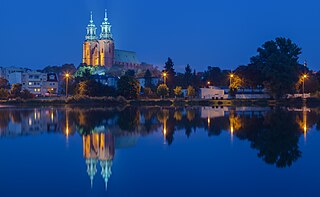
Gniezno is a city in central-western Poland, about 50 kilometres east of Poznań. Its population in 2021 was 66,769, making it the sixth-largest city in the Greater Poland Voivodeship. One of the Piast dynasty's chief cities, it was the first historical capital of Poland in the 10th century and early 11th century, and it was mentioned in 10th-century sources, possibly including the Dagome Iudex, as the capital of Piast Poland.
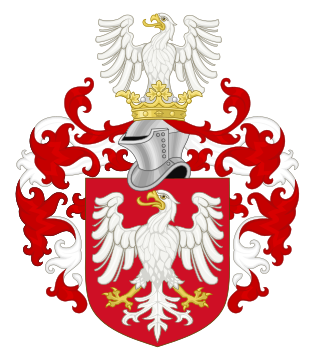
The House of Piast was the first historical ruling dynasty of Poland. The first documented Polish monarch was Duke Mieszko I. The Piasts' royal rule in Poland ended in 1370 with the death of king Casimir III the Great.

Henry II the Pious was Duke of Silesia and High Duke of Poland as well as Duke of South-Greater Poland from 1238 until his death. Between 1238 and 1239 he also served as regent of Sandomierz and Opole–Racibórz. He was the son of Henry the Bearded and a member of the Silesian Piast dynasty. In October 2015, the Roman Catholic Diocese of Legnica opened up his cause for beatification, obtaining him the title of Servant of God.

The Congress of Gniezno was an amicable meeting between the Polish Duke Bolesław I the Brave and Emperor Otto III, which took place at Gniezno in Poland on 11 March 1000. Scholars disagree over the details of the decisions made at the convention, especially whether the ruler of Poland was pledged the king's crown or not.

The Duchy of Greater Poland was a district principality in Greater Poland that was a fiefdom of the Kingdom of Poland. It was formed in 1138 from the territories of the Kingdom of Poland, following its fragmentation started by the testament of Bolesław III Wrymouth. In 1177, the state broke had separated into the duchies of Poznań, Gniezno and Kalisz, and united again in 1279, lasting in that form until 1320, when it was incorporated back into the Kingdom of Poland. Its capital was Poznań.
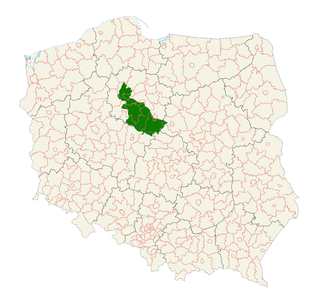
Kuyavia, also referred to as Cuyavia, is a historical region in north-central Poland, situated on the left bank of Vistula, as well as east from Noteć River and Lake Gopło. It is divided into three traditional parts: north-western, central, and south-eastern.
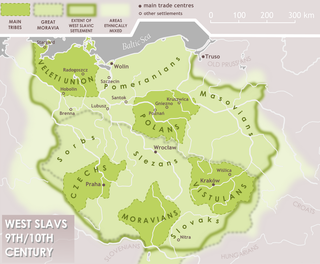
The Western Polans, also known as Polans, and Polanians, were a West Slavic and Lechitic tribe, inhabiting the Warta River basin of the contemporary Greater Poland region starting in the 6th century. They were one of the main tribes in Central Europe and were closely related to the Vistulans, Masovians, Czechs and Slovaks.

Bardo is a historical town in Ząbkowice Śląskie County, Lower Silesian Voivodeship, in south-western Poland. It is the seat of the administrative district (gmina) called Gmina Bardo.

Inowrocław Voivodeship was a unit of administrative division and local government in Poland from the 14th century to the First Partition of Poland in 1772. Together with the neighbouring Brześć Kujawski Voivodeship it was part of the Kuyavia region and the Greater Polish prowincja.
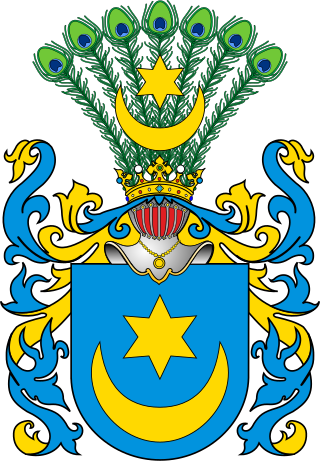
The House of Tarnowski is the name of a Polish noble and aristocratic family. Because Polish adjectives have different forms for the genders, Tarnowska is the form for a female family member.
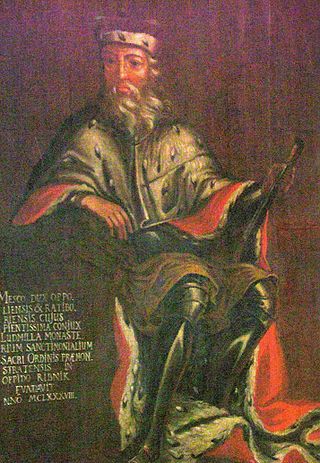
Mieszko IV Tanglefoot was Duke of Kraków and High Duke of Poland from 9 June 1210 until his death one year later. He was also Duke of Silesia from 1163 to 1173, Duke of Racibórz from 1173, and Duke of Opole from 1202.
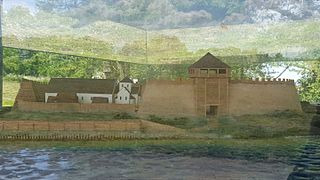

The Christianization of Poland refers to the introduction and subsequent spread of Christianity in Poland. The impetus to the process was the Baptism of Poland, the personal baptism of Mieszko I, the first ruler of the future Polish state, and much of his court. The ceremony took place on Holy Saturday, 14 April 966, although the exact location is disputed by historians, with the cities of Poznań and Gniezno being the most likely sites. Mieszko's wife, Dobrawa of Bohemia, is often seen as a major influence on Mieszko's decision to accept Christianity.
Piast the Wheelwright was a semi-legendary figure in medieval Poland, and the presumed founder of the Piast dynasty that would rule the future Kingdom of Poland.

Szprotawa is a town in western Poland, in Żagań County, Lubusz Voivodeship. It has 11,820 inhabitants (2019).

Władysław Odonic, nicknamed Plwacz or the Spitter, was a duke of Kalisz 1207–1217, duke of Poznań 1216–1217, ruler of Ujście in 1223, ruler of Nakło from 1225, and duke of all Greater Poland 1229–1234; from 1234 until his death he was ruler over only the north and east of the Warta river.

The most important phenomenon that took place within the lands of Poland in the Early Middle Ages, as well as other parts of Central Europe was the arrival and permanent settlement of the West Slavic or Lechitic peoples. The Slavic migrations to the area of contemporary Poland started in the second half of the 5th century AD, about a half century after these territories were vacated by Germanic tribes fleeing from the Huns. The first waves of the incoming Slavs settled the vicinity of the upper Vistula River and elsewhere in the lands of present southeastern Poland and southern Masovia. Coming from the east, from the upper and middle regions of the Dnieper River, the immigrants would have had come primarily from the western branch of the early Slavs known as Sclaveni, and since their arrival are classified as West Slavs and Lechites, who are the closest ancestors of Poles.

The period of rule by the Piast dynasty between the 10th and 14th centuries is the first major stage of the history of the Polish state. The dynasty was founded by a series of dukes listed by the chronicler Gall Anonymous in the early 12th century: Siemowit, Lestek and Siemomysł. It was Mieszko I, the son of Siemomysł, who is now considered the proper founder of the Polish state at about 960 AD. The ruling house then remained in power in the Polish lands until 1370. Mieszko converted to Christianity of the Western Latin Church in an event known as the Baptism of Poland in 966, which established a major cultural boundary in Europe based on religion. He also completed a unification of the Lechitic tribal lands that was fundamental to the existence of the new country of Poland.
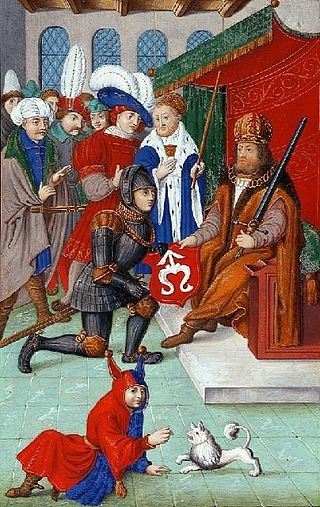
Odrowąż was an important family of knights in the medieval Kingdom of Poland, strongly allied with the Catholic church in the 12th century.
References
- ↑ cdweb.pl. "Organizacja Turystyczna Szlak Piastowski turystyka wycieczki przewodnicy Gniezno". www.szlakpiastowski.com.pl. Retrieved 2015-09-22.